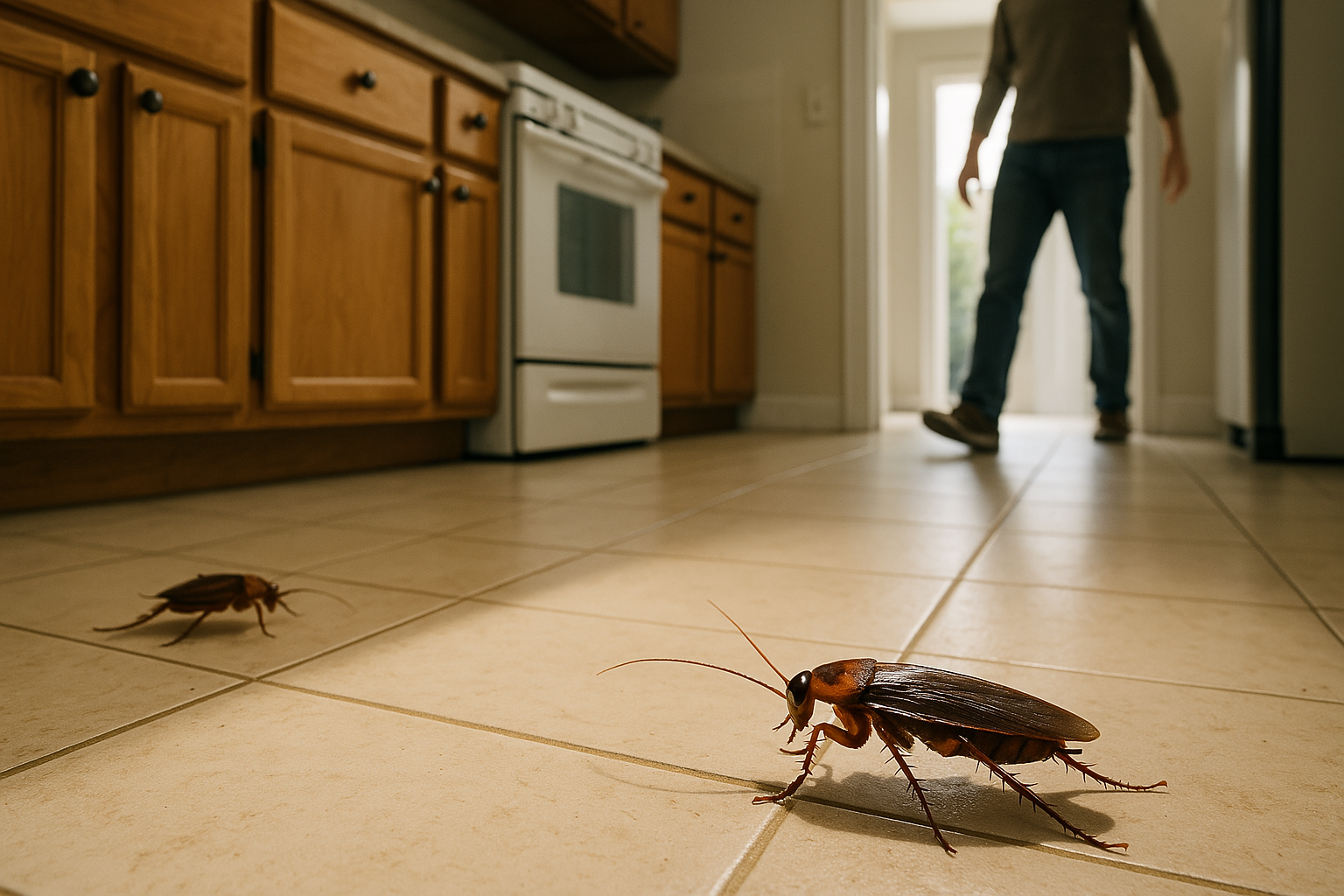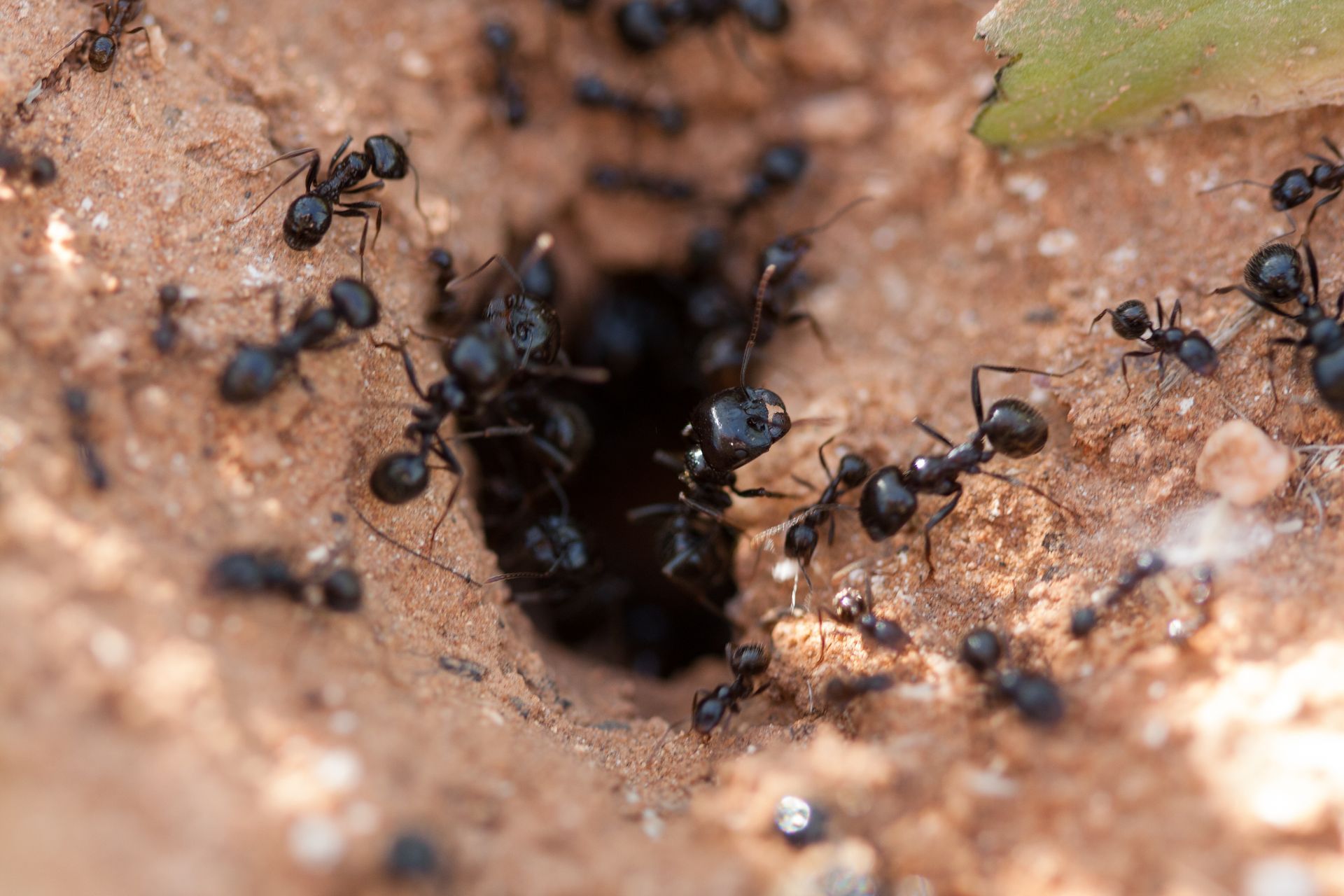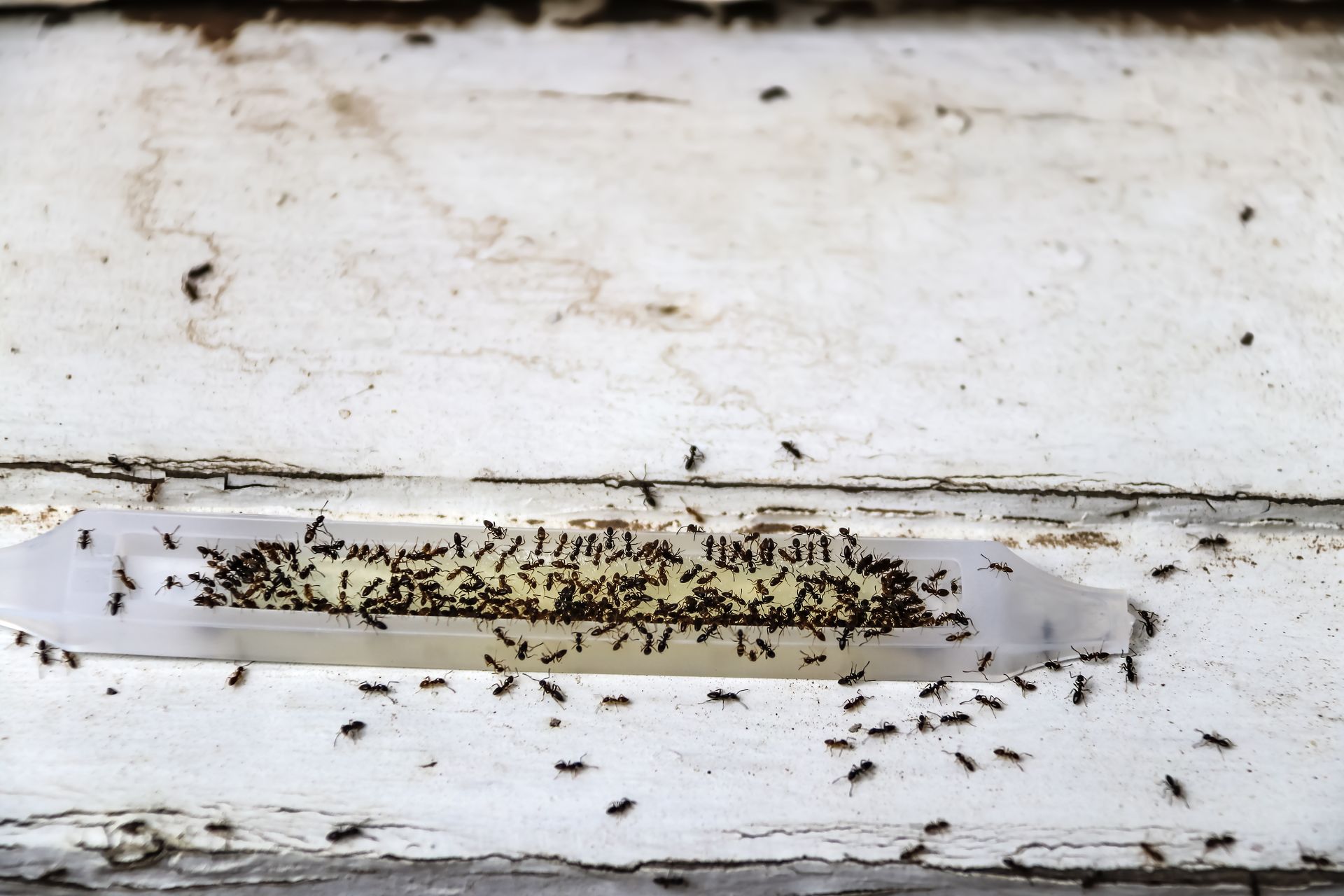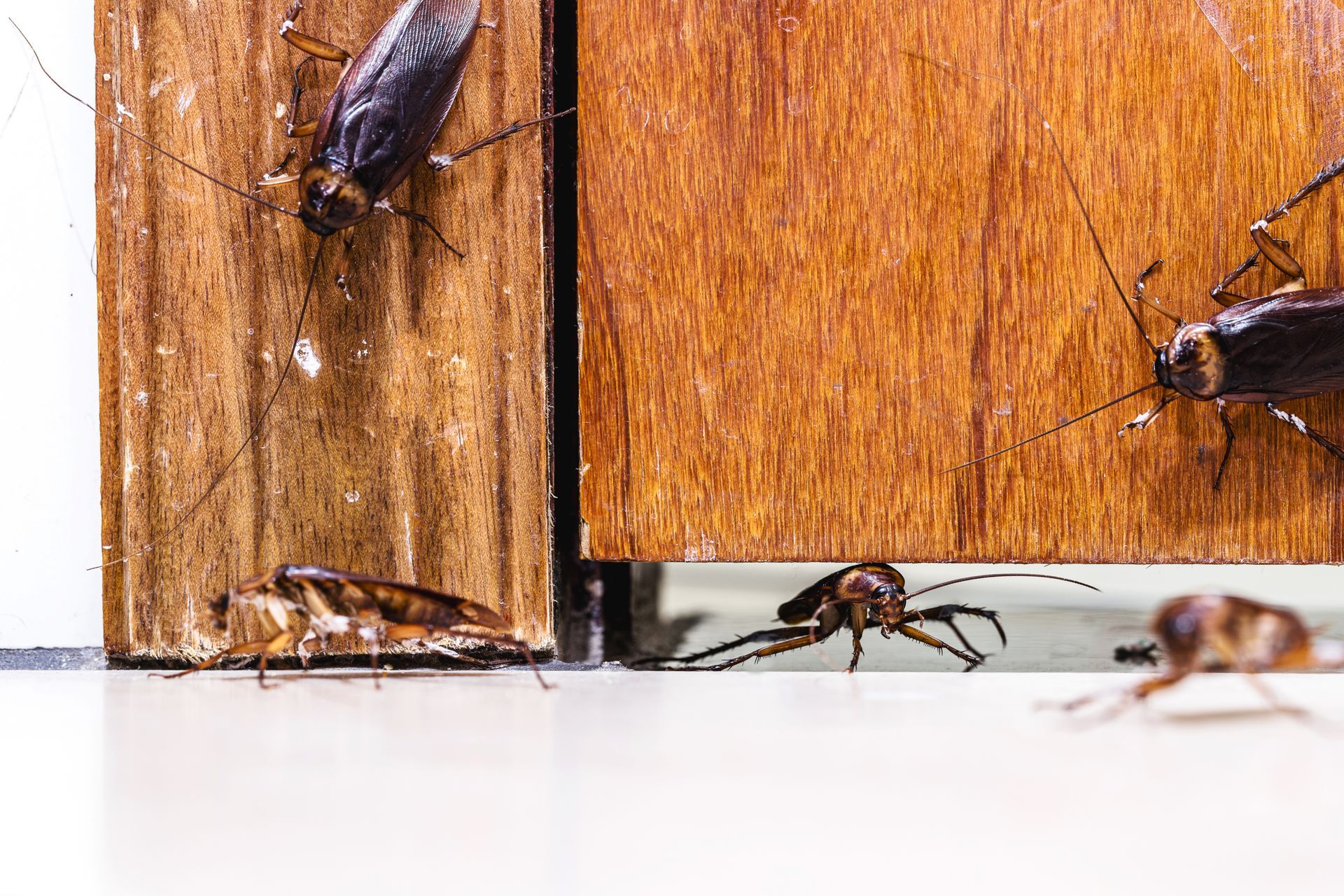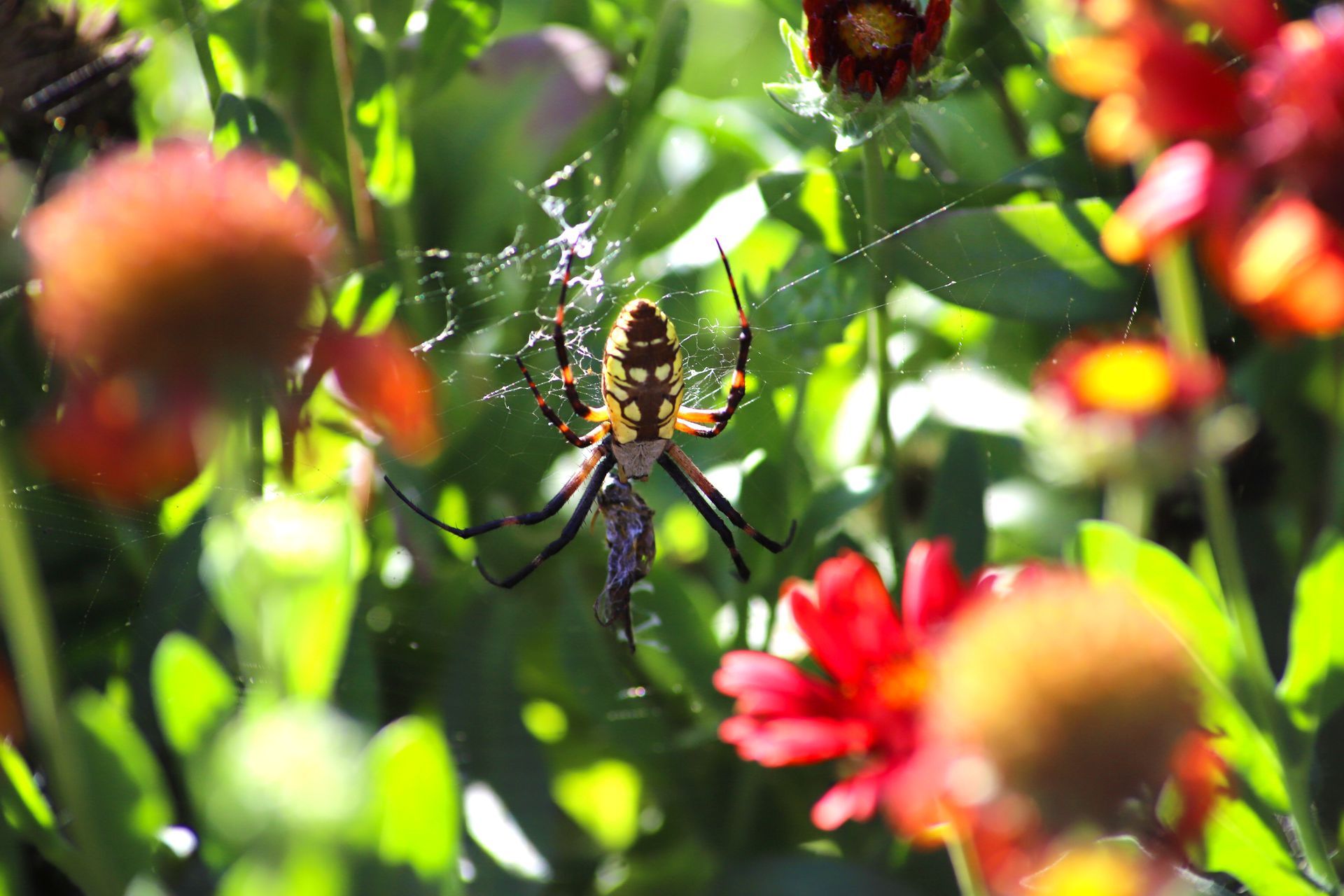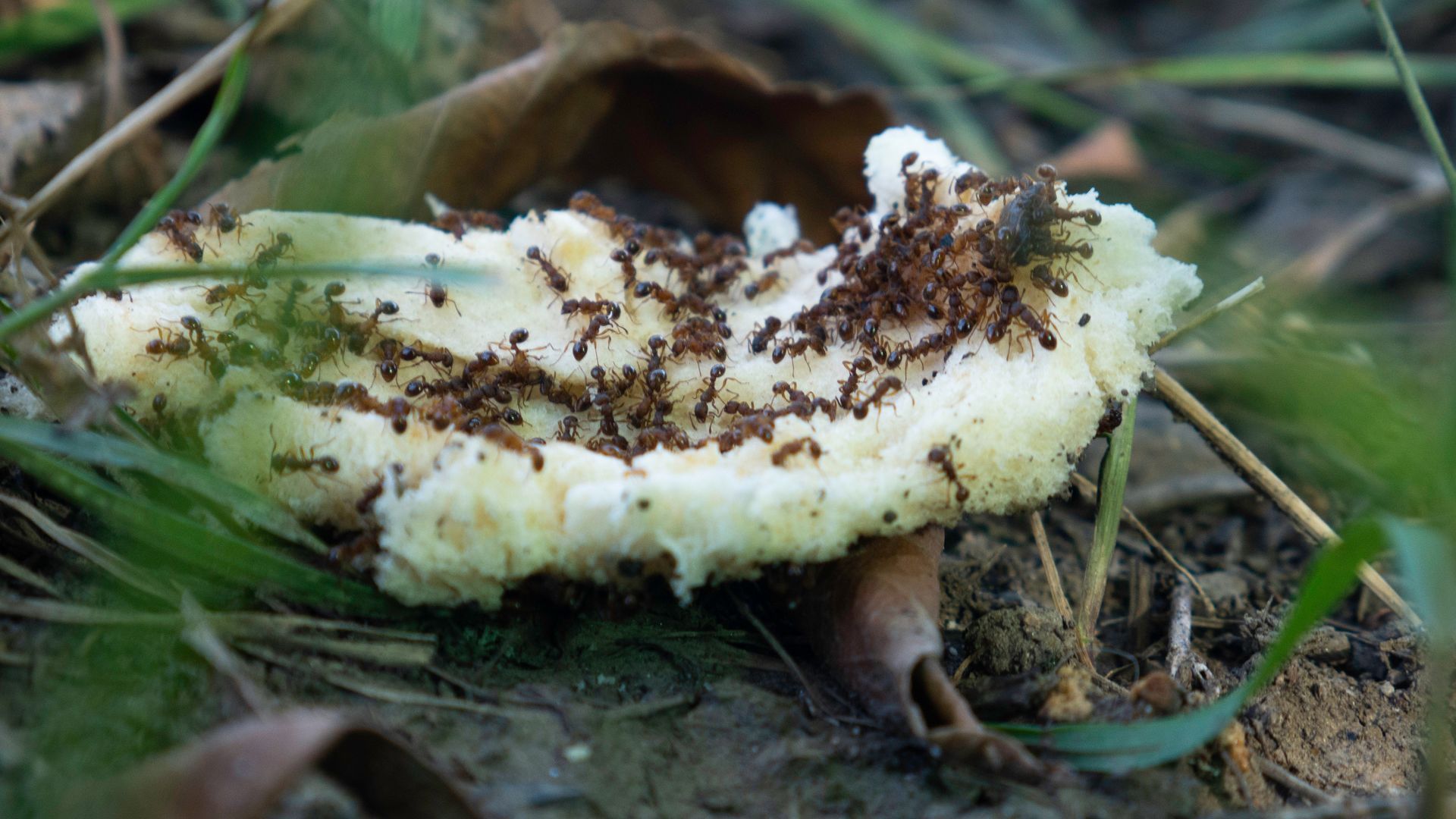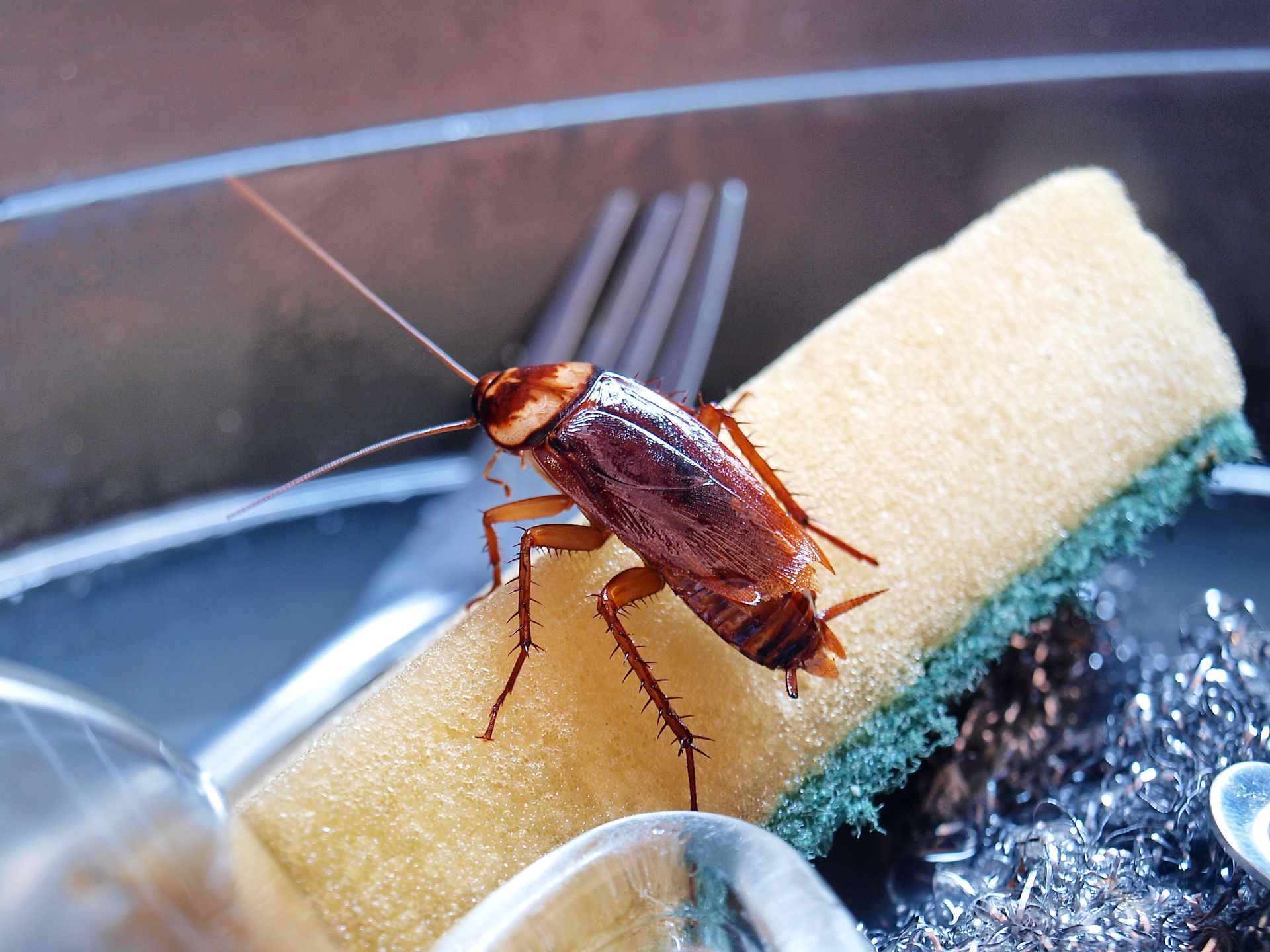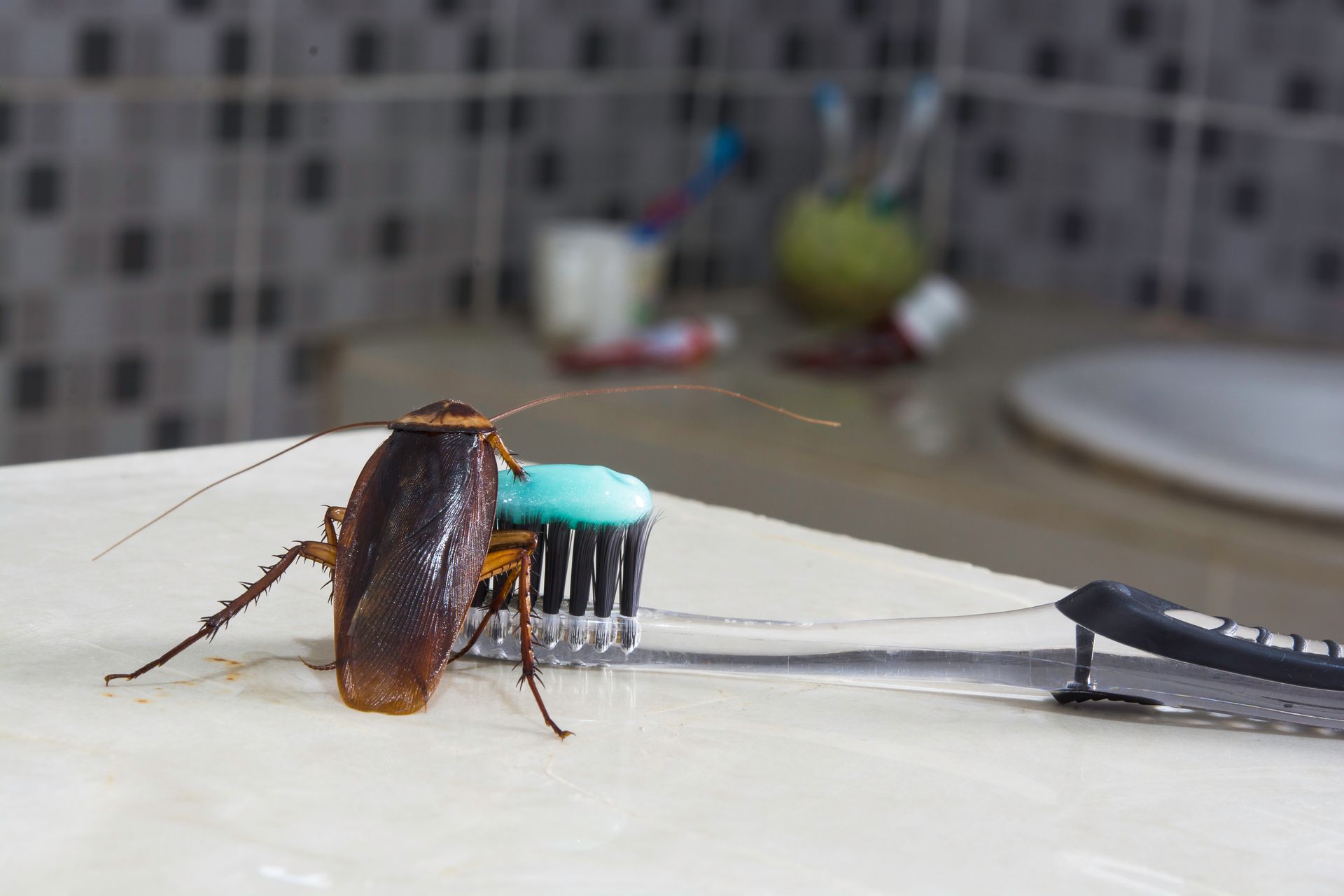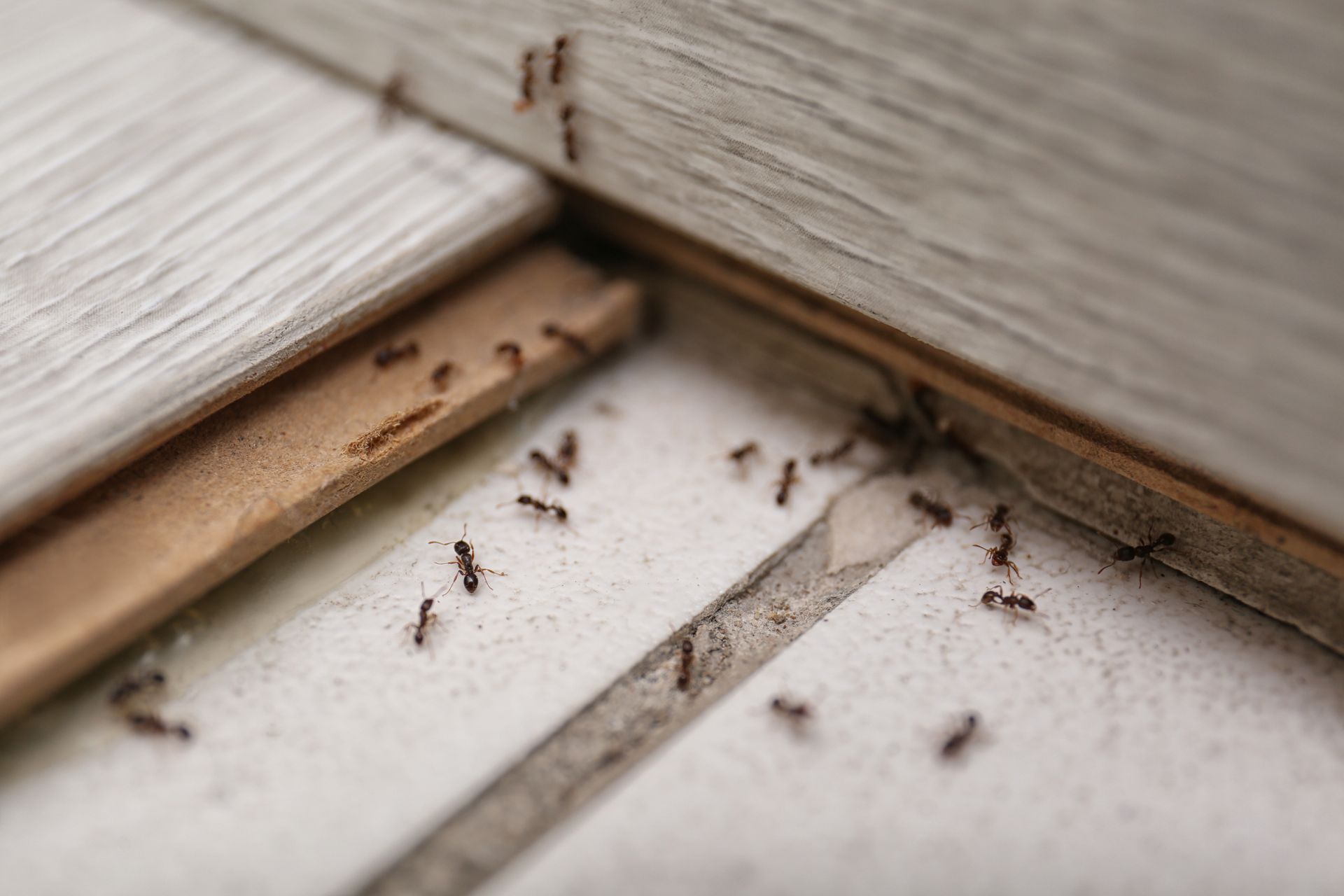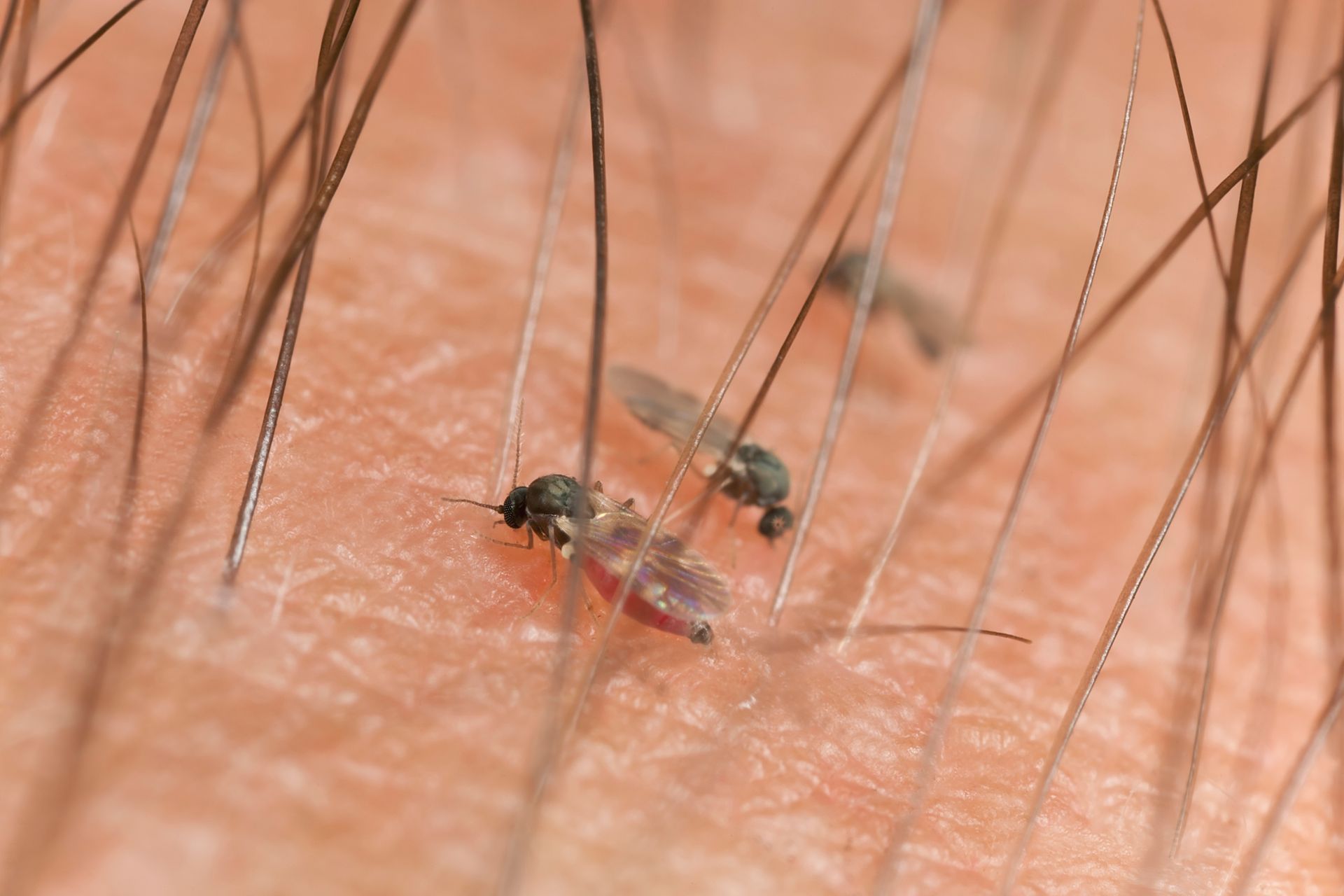How to Get Rid of Carpet Beetles
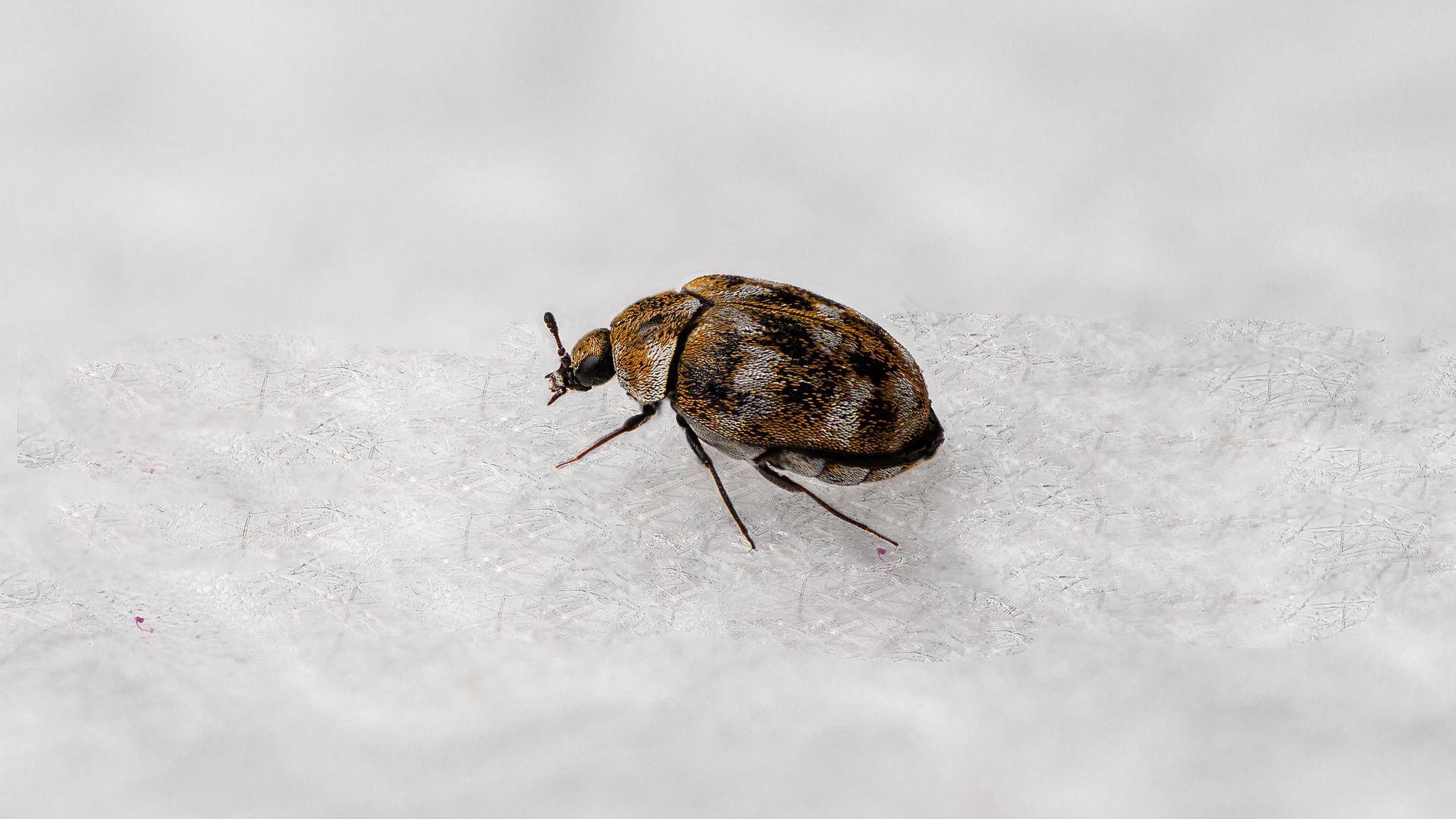
Carpet beetles are small and seemingly innocuous pests that present a significant challenge for homeowners and businesses alike. They belong to the family of beetles known as dermestids which are creatures that find sanctuary in a variety of environments that range from homes and warehouses to museums. Three types of carpet beetles have been identified as common household pests:
- The varied carpet beetle (Anthrenus verbasci)
- The furniture carpet beetle (Anthrenus flavipes)
- The black carpet beetle (Attagenus unicolor)
The adaptability of these pests to various climates makes them a widespread issue. These insects often go unnoticed in their egg and larval stages which make early detection and control a complex task. The high reproduction rate of carpet beetles only compounds the difficulty in managing their populations effectively and often results in significant damage before the infestation is even discovered.
Understanding how to eliminate these unwelcome guests requires a multifaceted approach. While adult carpet beetles are a nuisance pest, their larvae are the primary concern for homeowners. These worm-like larvae not only cause significant destruction to natural fiber materials such as feathers, fur, leather, cotton, silk, and wool but can also cause skin irritations and allergic reactions in some individuals. Identifying what attracts these pests indoors and learning how to manage both the adult beetles and their destructive larvae are critical first steps in mitigating their impact. As we dive into the various strategies for getting rid of carpet beetles, it's essential to recognize the importance of early detection and consistent prevention in safeguarding our living spaces against these persistent pests.
Why Carpet Beetles Need to Be Treated
Carpet beetles require prompt and effective treatment due to their ability to cause significant damage to various natural materials within homes and other environments. These pests, when in their larval stage, exhibit a voracious appetite for animal-based products including wool, silk, leather, fur, and even the natural bristles found in hairbrushes. Unlike moths, which might leave scattered holes, carpet beetle larvae damage often manifests as extensive harm to large areas of garments, carpets, and other items which makes them a serious threat to textiles and other stored goods. This feeding activity is usually concentrated in dark, secluded spaces which complicates the detection and management of infestations.
The damage they cause is not limited to textiles and can extend to items rarely considered at risk like piano felts and hammers which can require synthetic replacements to restore functionality. This is just one obscure example of the damage they can cause but it can extend to expensive taxidermied animals, luxury upholstered furniture, silken tapestries, and a number of other expensive and hard to replace items. The widespread and diverse nature of carpet beetle damage underscores the importance of treating infestations promptly to protect valuable belongings and maintain the integrity of affected items.
Carpet Beetle Management
The significant damage these pests can cause in our homes and personal belongings is why effective treatment against carpet beetles is needed. Carpet beetle larvae, which are the primary culprits of destruction, thrive on a diet that includes a variety of animal products and occasionally plant-based materials. Effective management of carpet beetle infestations requires a comprehensive approach that combines preventive measures with targeted interventions. Because carpet beetles can find nutrition in obscure places and disperse widely within an environment, control strategies must extend beyond simple pesticide application. Key to managing these pests include:
- Implementation of rigorous sanitation and exclusion practices
- Ensuring cleanliness and minimizing clutter to reduce the availability of food sources
- Strategic use of sticky traps and pheromone traps to control beetle populations
Using traps not only helps in identifying the presence and extent of infestations but also in evaluating the effectiveness of ongoing control measures. By adopting a multi-faceted approach to carpet beetle management, individuals can significantly reduce the likelihood of infestation and the associated damage caused by these destructive pests.
Getting Rid of Carpet Beetles Naturally
Addressing a carpet beetle infestation effectively requires timely and safe interventions, especially in environments shared with children and pets. Natural methods offer a gentle yet potent means to combat these persistent pests that target eggs, larvae, and adults without introducing harmful chemicals into your living space. The essence of natural control strategies lies in their ability to disrupt the life cycle of carpet beetles which ensures that they do not get a chance to multiply. By opting for such eco-friendly solutions, homeowners can protect their families and pets from potential toxins while simultaneously tackling the problem of carpet beetles head-on.
Cleaning and Eliminating Food Sources
Eliminating food sources is a foundational step in the battle against carpet beetles that addresses the root cause of infestations by removing the very resources that sustain these pests. A thorough clean-up operation targeting accumulations of lint, hair, dead insects, and other organic debris can significantly reduce the appeal of your home to carpet beetles. It's essential to be vigilant about the cleanliness of areas prone to beetle activity including rugs, carpets, curtains, bedding, stored linens, and upholstered furniture.
Beyond general cleaning, special attention should be paid to fabrics because stains from food and perspiration can attract carpet beetles. Laundering items in hot water is a reliable method to eliminate all stages of carpet beetles in affected textiles. For non-washable items such as mounted animal specimens or items stuffed with natural materials like hair or feathers, specialized treatments may be necessary.
Vacuuming
Vacuuming regularly emerges as a cornerstone strategy in both preventing and combating carpet beetle infestations effectively. This routine task acts as a critical line of defense by removing potential food sources, eggs, larvae, and even adult beetles from your living spaces. For optimal results, it's essential to thoroughly vacuum all carpets and rugs while paying special attention to edges, corners, and under furniture, which are areas where carpet beetle larvae are often hiding. Utilizing the vacuum's crevice tool extends your reach and enables you to access and clean those hard-to-reach nooks and crannies that might otherwise be overlooked.
Extending vacuuming efforts to include upholstered furniture is also crucial, as these items can harbor carpet beetles in their fabric folds and crevices. The crevice tool becomes an invaluable asset here, allowing for deep cleaning of sofas, chairs, and other upholstered pieces where larvae and eggs may be hidden. After vacuuming is completed, it is important to ensure that the bag is disposed of to prevent reinfestation.
Protect Items in Storage
Protecting items in storage from carpet beetles requires a meticulous approach that begins with ensuring the items are free from pests before entering storage. Airtight containers serve as the first line of defense that preserves the integrity of susceptible items such as clothing, fabrics, and other materials. By keeping items contained, carpet beetles and their larvae won’t be able to infiltrate the exterior shell which will keep the items safe from damage.
Heating, Freezing, and Suffocating
For items requiring special handling or those too delicate for traditional pest control methods, alternative treatments such as leveraging extreme heat, cold, or anoxic conditions can be used to kill carpet beetles. Heating items to at least 120°F for 30 minutes or freezing them for two weeks at temperatures below 18°F can effectively eliminate all stages of carpet beetle development. Meanwhile, anoxic treatment, which involves removing oxygen from the storage environment using oxygen scavengers within a sealed, oxygen-impermeable bag, can also be effective over a period of 8-21 days.
Steam Cleaning
Steam cleaning offers a potent complement to vacuuming in the fight against carpet beetles. This method not only aids in the physical removal of eggs and larvae from infested textiles and surfaces but also utilizes high temperatures to exterminate these pests in all stages of their life cycle. By moving the steam cleaner thoroughly over all areas where infestations are suspected or confirmed, you ensure that no nook or cranny provides refuge for these resilient pests. The steam penetrates deep into fabrics, carpets, and upholstery and delivers a heat treatment that is lethal to carpet beetles yet safe for most household materials.
Laundry
Laundry practices leverages heat, water, and detergent to eliminate these pests at all stages of their life cycle. Insects like carpet beetles breathe air through spiracles on their abdomens but lack the ability to hold their breath which makes them vulnerable to suffocation when submerged in water mixed with detergent. Detergent alters the surface tension of water which prevents insects from trapping air bubbles against their bodies. This effect, coupled with the fact that carpet beetles are highly sensitive to heat and cannot survive temperatures of 120°F or higher, means that laundering infested items with hot water and detergent effectively ensures the elimination of carpet beetles and their larvae.
Drying the laundered items at the highest temperature possible for at least 30–60 minutes further guarantees the eradication of any surviving beetles, larvae, or eggs. For items that cannot be washed, using a dryer can still provide a viable solution to kill the pests by exposing them to lethal temperatures.
Using Vinegar
Using vinegar presents a safe, natural method to combat carpet beetle infestations that harnesses the power of vinegar’s acidity to deter these pests. A simple yet effective solution can be created by mixing equal parts of vinegar and water. When applied using a spray bottle, this mixture can be used to lightly coat carpets, upholstery, and other fabric-based surfaces where carpet beetles are known to reside.
Both white and apple cider vinegar proved to be effective in this battle against carpet beetles. For more targeted applications, pouring straight vinegar into a spray bottle and applying a generous mist over furniture, carpets, and affected clothing can help eradicate these pests. In cases where infestations have spread to closets or dresser drawers, washing stored clothing in a solution of vinegar and water can effectively kill any lurking larvae and eggs.
Using Diatomaceous Earth
Diatomaceous earth stands out as a powerful, natural ally in the fight against carpet beetle larvae due to its desiccant properties. This substance, which is readily available through agricultural feed stores and online retailers, works by dehydrating the larvae upon contact. This leads to the quick and effective extermination of these pests. When applying diatomaceous earth, it's crucial to treat areas such as rugs, the backs of cabinets and closets, and around baseboards where carpet beetles are likely to be hiding. This ensures that larvae coming into contact with the powder are killed off before causing further damage to fabrics and other materials within your home.
For those considering diatomaceous earth as a treatment option, it's essential to select the food-grade variety to ensure safety around pets and humans. Additionally, protective measures such as wearing gloves and a respirator or mask are highly recommended to avoid inhalation of the fine dust particles. This precaution is particularly important during application, as the particles can be easily dispersed into the air.
Chemical Treatment
When natural and preventive measures are insufficient to curb a carpet beetle infestation, chemical treatment becomes the next logical step. Opting for an insecticide specifically formulated to target carpet beetles is crucial for effective pest control. These products are designed to address infestations in areas and on items that cannot be managed through laundering or dry cleaning. Be sure to adhere strictly to the manufacturer's instructions to maintain safety and maximize effectiveness. Chemical treatments, when used judiciously and as part of a comprehensive pest management strategy, can provide a potent defense against stubborn carpet beetle infestations.
Insecticides
Insecticides play a crucial role in the targeted approach to combatting carpet beetle infestations, particularly in areas where these pests are likely to hide and breed. Effective application involves using these chemicals in areas where carpet beetle activity has been identified. Focus on the edges of floor coverings, next to baseboards, beneath rugs and furniture, inside closets, on shelving storing susceptible fabrics, and within cracks and crevices where lint accumulates. It's vital to avoid direct application on clothing or bedding to prevent potential damage or adverse health reactions. For treating less accessible areas such as attics or wall voids, insecticidal dusts like silica aerogel offer a viable solution to carpet beetle extermination. These products contain active ingredients like silicon dioxide which are designed to penetrate deep into pest hiding spots. Caution is advised to prevent inhalation because breathing in this powder can cause problems for sensitive individuals with respiratory conditions.
Vapor Phase Additives
When storing items in airtight containers, the use of mothballs and flakes or crystals containing paradichlorobenzene (PDB) offers an additional protective measure. PDB acts as a vapor-phase insecticide and repellent that creates an environment that is inhospitable to carpet beetles. It is important to note that care must be taken to prevent these insecticidal products from coming into contact with plastic components or food items due to the potential for damage or contamination.
Boric Acid
Boric acid serves as an effective and accessible solution for tackling carpet beetle infestations. This method leverages its toxic impact on insect metabolism to eradicate pests from your home. It is available in powder form in supermarkets and pharmacies as boric acid which can be evenly sprinkled across infested carpets to target and eliminate carpet beetles. The application process involves distributing the powder into the carpet fibers with a broom or brush to ensure thorough coverage, followed by a waiting period for the boric acid to take effect before vacuuming up the residue. This treatment option requires caution due to the toxicity of boric acid to both humans and pets if ingested in significant amounts or inhaled.
For a more targeted approach, boric acid can also be transformed into a larvae-killing spray. By dissolving 1 tablespoon of boric acid in 2 cups of hot water, you can create a solution that can be applied to curtains, upholstery, baseboards, and other vulnerable areas. This spray method allows for direct application to a variety of surfaces which increases the chances of reaching and eliminating carpet beetle larvae hiding in less accessible spots.
Professional Pest Control
When a carpet beetle infestation grows beyond the abilities of DIY treatment attempts or if the pests make a comeback despite comprehensive cleaning efforts it is probably time to seek professional pest control services. Experienced professionals possess the expertise and resources to formulate and execute a specialized plan tailored to your specific situation. These experts utilize a combination of advanced techniques and products, many of which are not available to the public, to address the root of the infestation and prevent future occurrences. Opting for professional pest control offers the peace of mind that comes with knowing your carpet beetle problem is being handled efficiently and effectively by professionals who know how to safeguard your home and belongings from further damage.
How to Prevent Carpet Beetles from Returning
Ensuring carpet beetles do not make a return to your home involves adopting a series of preventive measures aimed at creating an environment that's less inviting to these pests. Regular cleaning and maintenance are key components of a strategy designed to keep carpet beetles at bay. Here are essential steps to prevent carpet beetle infestations:
- Regularly clean up accumulations of human and pet hair underneath furniture.
- Immediately address spilled grains and flour in the kitchen or pantry.
- Wash heavily soiled clothing promptly.
- Vacuum frequently while paying close attention to:
- Windowsills in the spring, where adult beetles might congregate.
- Under all furniture, including couches and beds.
- The pantry, especially in the event of grain or flour spills.
- Closets where natural fiber clothes are stored long-term.
By adhering to these preventive measures, you can significantly reduce the likelihood of carpet beetle infestations and protect your home from the damage they cause.
Contact EcoGuard Pest Management if You Are Dealing with Carpet Beetles
In the battle against carpet beetles, having a reliable ally can make all the difference. EcoGuard Pest Management offers expert solutions tailored to your specific situation to ensure your home remains free from these unwelcome guests. Whether you're grappling with an existing infestation or seeking preventive measures to protect your home, our team is equipped with the knowledge and tools necessary to deliver effective, lasting results. If carpet beetles have made an appearance in your home, don't wait for the problem to escalate. Contact EcoGuard Pest Management today and take the first step towards a pest-free environment.
Getting Rid of Carpet Beetle FAQs
How do I get rid of carpet beetles permanently?
To permanently eliminate carpet beetles, integrate thorough cleaning, vacuuming, and laundry practices to remove food sources and pests at all life stages. Consider using natural remedies like diatomaceous earth and vinegar for safe, effective treatments. For persistent infestations, professional pest control services like those offered by EcoGuard Pest Management can provide specialized, comprehensive solutions to ensure carpet beetles are eradicated from your home for good.
What causes carpet beetles?
Carpet beetles are attracted to homes in search of food sources. Adults feed on flower pollen and nectar which can often be found around homes in gardens and landscaping. If they manage to enter your home, they can lay eggs which then hatch into damaging larvae that feed on a wide variety of materials including natural fibers found in carpets, furniture, clothing, and pantry items.
Does vinegar actually kill carpet beetles?
Vinegar can effectively kill carpet beetles due to its acidity. A solution of equal parts water and vinegar can be applied using a spray bottle to infested areas. This will help eliminate carpet beetles by disrupting their living environment. Both white and apple cider vinegar are suitable for this purpose and offer a safe, natural method for combating these pests.
Are carpet beetles dangerous or harmful?
Carpet beetles themselves are not directly harmful to humans, but their larvae can cause damage to natural fiber materials. The larvae's ability to digest animal and plant products can lead to significant damage to carpets, clothing, and upholstered furniture. Thus, while not a health hazard, carpet beetles can be harmful to belongings and warrant control measures.


